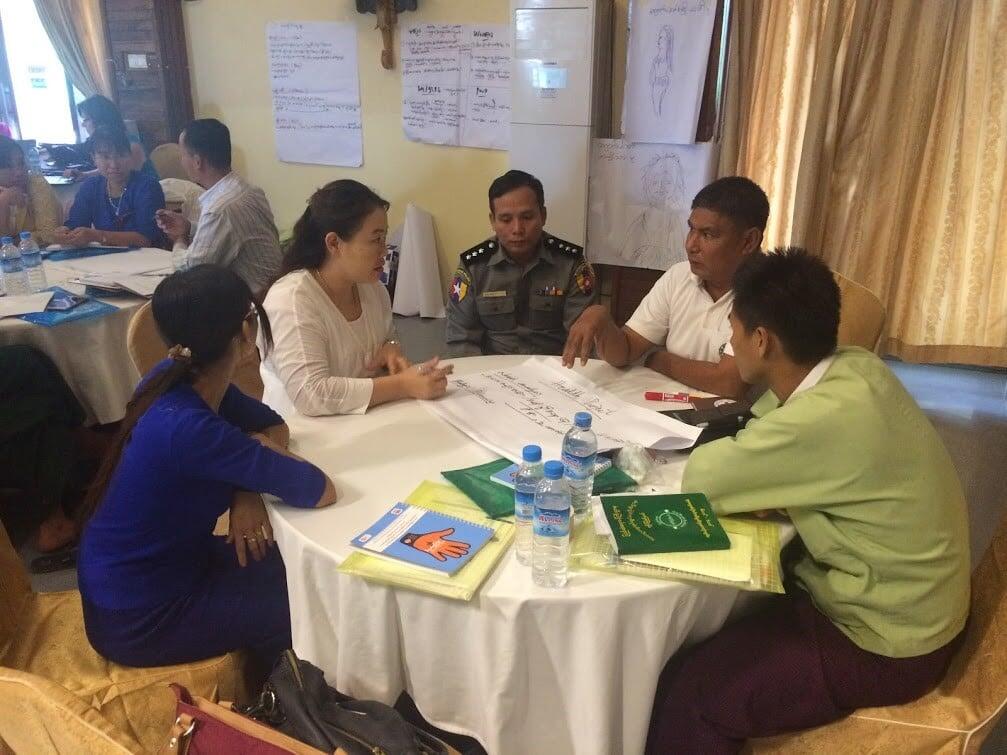When disaster strikes, women and children are more vulnerable than men, and more women and children die in emergencies.
To increase understanding of gender dimensions in crisis, and to improve preparedness in Myanmar, UNFPA works to build capacity among key actors in both the government and the NGO sector. The focus is on areas prone to disaster and/or affected by conflict, and workshops have been held in both Rakhine and Kachin.
The 2-day workshop in Sittwe, Rakhine, brought together staff from national and international NGOs with staff from government agencies/departments as diverse as Social Welfare, Fishery, General Administration, Forestry, Planning, Border Affairs, Police, Labour, Health, and Education.
Rights, opportunities and results
The event was all about gender and human rights in the Rakhine context. Rarely are tools provided for how to incorporate measures on gender equality in humanitarian programming. This event did just that.
“For me, the workshop is both useful and applicable. I have learned about the measures for gender equality, and now I have in-depth knowledge of rights, opportunities and results”, says participant Daw Mya Kyi, Assistant Director of the Rakhine State Health Department.
The training covered issues ranging from the nature of gender to the linkage between gender, power, culture and human rights standards and international humanitarian laws. Those at the event brainstormed about ways to get more gender sensitivity into program planning, including how to measure and preventing gender-based violence.
Thanks to the workshop, I am now better able to prioritize the women and child during disaster responses,” says U Phyu Shia, who is a Fire Service Department Officer.
Disasters are not gender blind
During his opening remarks, the Myanmar Department of Social Welfare Deputy Director General Dr. San San Aye reaffirmed the Myanmar commitment on the Convention on the Elimination of all Forms of Discrimination Against Women (CEDAW) and the Myanmar National Strategic Plan on the Advancement of Women.
UNFPA Head of Sub-Office, Sarah Kathrine Baird, highlighted both the vulnerability and the capacity of women during disasters. She said that disasters are not gender blind: More women than men suffer during and after disasters. Therefore, it is critical to understand gender dimensions and to take them into account in preparedness work.
The training course is based on a new global initiative lead by the Interagency Standing Committee for coordination of humanitarian assistance. This is a course that is being rolled out both in Asia and in other parts of the world. The training on Gender in Humanitarian Action happened in Sittwe. It was adapted for the Rakhine context by UNFPA with support from UNDP. The workshop was co-organized by UNFPA and the Department of Social Welfare.


